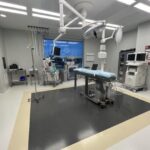Running a medical clinic can be a challenging and costly endeavor. The expenses can quickly add up with staffing, equipment, and supplies. As a healthcare provider running facilities similar to urgent care Warren, your top priority is providing quality patient care in a way that can help you sustain your business. High-quality service means you do not want to cut corners that could put patients at risk or compromise the integrity of your practice.
So, how can you lower your expenses without sacrificing quality? This blog explores some strategies for doing just that. By implementing these tips, you can optimize your clinic’s finances while still providing excellent care to your patients.
1- Negotiate with Vendors
As a medical clinic owner, one of the best ways to reduce costs without compromising quality is to negotiate with vendors for better rates on supplies and equipment. It can help you secure better prices on various medical supplies and equipment.
Building a rapport with the vendor is a vital aspect of a successful negotiation. Spend some time learning about the supplier. Engage in sincere curiosity about their business and products by asking pertinent questions. This way, you can build trust, which in turn can lead to more fruitful negotiations.
When contacting vendors, be clear about your needs and budget constraints. For example, if you want to buy anesthesia machines for your clinic, explain to the vendor what you need and then ask them to recommend anesthesia machines at best rates. You can also ask if they can offer any discounts or special rates. Do not be afraid to negotiate and offer incentives, such as long-term contracts or commitments to purchase a certain volume of equipment.
By negotiating with vendors, you can potentially save thousands of dollars on medical equipment, supplies, and other costs for your clinic. You can redirect those savings toward improving patient care and your clinic’s overall performance.
2- Reduce Energy Consumption
Healthcare facilities are notoriously energy-intensive buildings, with lights, medical equipment, and HVAC systems all running around the clock. But that does not mean they have to be a drain on your budget. There are many ways to cut energy consumption.
First, consider switching to energy-efficient light bulbs and installing automatic light systems to avoid leaving unnecessary lights on. Turning off electronic devices when not in use is also an easy way to reduce energy consumption. And why not take things a step further by switching to renewable sources of energy? It is good for the planet and can save you money in the long run.
Consider conducting an energy audit if you want to reduce energy consumption drastically. It can help you find out where you might be overpaying for electricity.
3- Cut Back on Paper
Medical clinics can rack up significant expenses due to extensive paperwork. In addition to the direct costs of printing and storing paper documents, there are also indirect costs associated with paper usage. For example, the more paperwork a clinic generates, the more space is required to store it. This means clinics may need to rent additional space or invest in additional storage equipment, such as filing cabinets or document management systems. Fortunately, cutting back on paper has become easier nowadays with smart printing solutions from CopyTex Business Solutions.
One of the most substantial measures in this regard is using Electronic Medical Records (EMRs). EMRs are digital records that contain all patient information, from medical history to test results. It saves money on printing and storage costs and makes it easier for your staff to access and share patient information. Another way to reduce paper usage is to encourage patients to use online forms to fill out paperwork before appointments.
4- Optimize Staff Scheduling
Staff scheduling is a critical component of any medical clinic’s operations. However, when you have too many staff members, you may be wasting money on payroll costs. Likewise, you may be understaffed if you have too few staff members, leading to increased employee turnover and training costs. That is where optimal scheduling can help.
Providing flexible options is the best way to streamline staff scheduling. It allows your staff to opt for work schedules that suit their needs while ensuring you have the coverage you need during peak hours.
Another way to optimize your scheduling is to ask your employees what shifts they prefer and try to accommodate their requests as much as possible. It makes your staff feel valued and increases their job satisfaction. As a result, you can expect your team to give their best efforts when providing patient care.
Keep in mind that staff requirements at your clinic might change over time. To stay on top of the changing demands, be sure to leverage tools such as predictive analytics. It will enable you to evaluate scheduling data and other key metrics to forecast future staffing needs. That way, you may anticipate changes in patient volume or other factors that may impact staffing levels, allowing you to adjust your schedules proactively.
5- Use Telemedicine to Reduce In-Person Visits
Telemedicine has been a game-changer for the healthcare industry, allowing doctors and patients to connect remotely and reducing the need for in-person visits. Various studies found that telehealth claims increased between 2019 to 2020, largely due to the COVID-19 pandemic.
But telemedicine is not just a temporary solution – it is a valuable tool for reducing costs and improving patient outcomes in the long term. There are many ways to incorporate telemedicine into your hospital’s operations. You can offer virtual consultations, follow-up appointments, and remote monitoring for certain conditions. Apart from saving costs, it can reduce the burden on your staff.
6- Encourage Preventive Care
Preventive care involves early detection and management of potential health issues before they become more severe and require expensive treatments. Treating severe conditions requires specialized equipment and professionals, which can increase your overhead costs.
Conclusion
While there is no one-size-fits-all approach to reducing costs at a medical clinic, the key is to be strategic and innovative. By identifying inefficiencies and finding creative solutions, clinics can reduce costs without compromising the quality of care. By doing so, they can create a sustainable business model that benefits patients and staff alike.
Read Also
- Essential Steps to Launch Your Own Optometry PracticeLaunching your own optometry practice can be a thrilling and fulfilling journey. However, it requires careful planning, dedication, and an understanding of what it takes to succeed. With the growth in demand for eye care, more and more individuals are seeking to start their own practices. But how do you get there? This guide walks… Read more: Essential Steps to Launch Your Own Optometry Practice
- Compounding Pharmacy: Personalized Medication SolutionsA compounding pharmacy plays a vital role in modern healthcare by providing customized medications tailored to the specific needs of individual patients. Unlike mass-produced drugs manufactured by pharmaceutical companies, compounded medications are prepared by licensed pharmacists who carefully combine, adjust, or modify ingredients to create a formulation that best suits a patient’s unique medical requirements.… Read more: Compounding Pharmacy: Personalized Medication Solutions
- The Best Business Decision a Surgeon Ever Made: Ordering a Medical Equipment AppraisalMost surgeons don’t go into medicine because they love spreadsheets, valuations, or negotiating buy-ins. They go into medicine because they want to operate, treat patients, and build something meaningful over time. For one surgeon, that mindset worked perfectly, until the day another surgeon decided to buy into his practice. That moment exposed a problem he… Read more: The Best Business Decision a Surgeon Ever Made: Ordering a Medical Equipment Appraisal
- Creative Approaches to Alleviating Healthcare Staff ShortagesHospitals and clinics are facing staff shortages, which makes it harder to take care of patients well. Finding simple and useful solutions is very important. Easy changes like flexible work hours, good training, and chances to grow can help staff stay happy. Technology, like online doctor visits and helpful tools, can make work easier. Smart… Read more: Creative Approaches to Alleviating Healthcare Staff Shortages
- Understanding the Role of Sterilizers in Healthcare FacilitiesHave you ever wondered how hospitals keep their equipment safe enough to use on dozens of patients every day? Most people never think about what happens behind the scenes, yet these hidden steps play a huge role in patient safety. Sterilizers are part of that system, working quietly to remove harmful germs before any instrument… Read more: Understanding the Role of Sterilizers in Healthcare Facilities
- Building Healthcare Access Where It’s Needed Most: A Local First ApproachHealthcare shouldn’t depend on where you live. But in the U.S., it often does. If you’re in a big city, you likely have options. If you’re in a small town or an underserved neighbourhood, it’s a different story. To fix this, more healthcare leaders are turning to a local-first approach. That means putting clinics and… Read more: Building Healthcare Access Where It’s Needed Most: A Local First Approach







